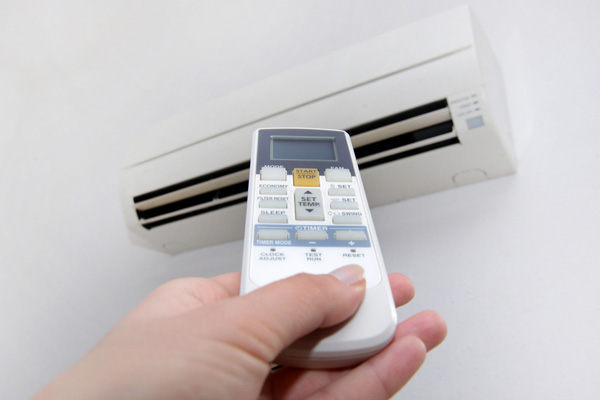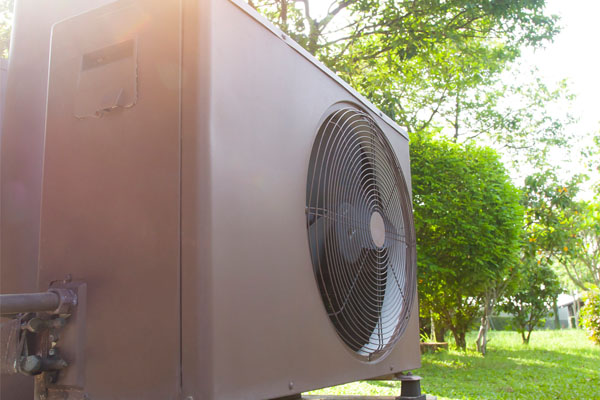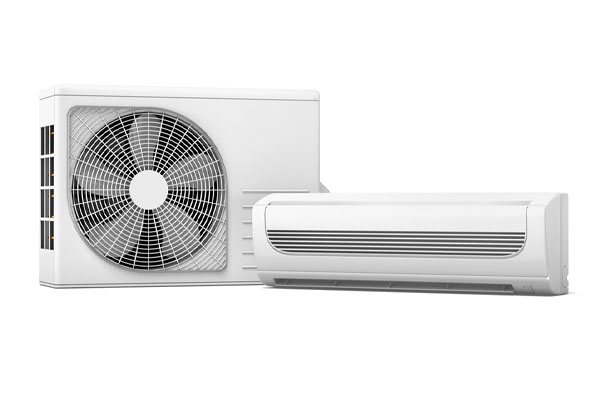Unlocking the Cool: How Do Ductless Air Conditioners Work?

Ductless air conditioning systems, distinct from their central counterparts, operate without the complexity of ductwork. In essence, these innovative units draw in warm air from the environment, extracting both moisture and heat and then expelling them outdoors, directly cooling the designated area.
This direct method of delivering chilled air into specific rooms or spaces sets ductless ACs apart from central systems, which rely on an extensive network of ducts to distribute cold air throughout a property. Despite their efficiency and unique operation, many homeowners still wonder, “How do ductless air conditioners work?”
How Do Ductless Air Conditioners Work?
This article delves further into ductless air conditioners.
Components of a Ductless AC System
A ductless air conditioning unit is ingeniously designed with three primary components:
Indoor Evaporator/Blower Unit

Positioned within the confines of the space it cools, this slim, approximately 3-foot-long unit plays a pivotal role. It draws in the room’s warm air, extracts moisture and heat, and then directs the cooled air back into the environment. This process ensures the delivery of chilled air directly into the room and facilitates the expulsion of the absorbed heat and moisture outdoors via the conduit.
Conduit
They serve as the vital connection between the indoor and outdoor units of the ductless AC. The conduit is a slender, extended cable housing the refrigerant tubing, condensation drain, and power cable responsible for supplying electrical power to the system’s interior and exterior components. Moreover, the conduit acts as the passage for expelling absorbed moisture and heat from indoors to the outdoor condenser unit, ensuring efficient cooling within your space.
Condenser

Usually positioned outdoors, the condenser’s primary task is to collect the heat transferred from the interior of your home and release it into the external environment.
Single-Zone Mini-Split vs. Multi-Zone Ductless Systems
Ductless AC systems are equally effective in single and multiple-room applications. They offer the flexibility to install in a range of environments per these two platforms:
Single-Zone Mini-Split Systems
Each mini-split system includes a singular indoor evaporator/blower unit paired with an outdoor condenser, perfectly suited for cooling individual rooms. For properties with sufficient outdoor space for multiple condensers, installing several ductless ACs to cool an entire building effectively is possible. This setup offers personalized temperature control for each zone, with the added advantage that a malfunction in one unit does not impact the operation of others.
Multi-Zone Ductless HVAC Systems
Multi-zone ductless AC systems come in two main types. The first type features a single outdoor condenser linked to several indoor evaporator/blower units, with each indoor unit equipped with its thermostat. This setup allows for simultaneous activation of all units when cooling is required, offering a cost-effective solution. It’s particularly well-suited for buildings where each room has varying cooling needs.
For a truly customizable solution with precise zoning capabilities, consider a multi-zone mini-split system equipped with separate compressor circuits for each indoor evaporator/blower unit. This design allows occupants in each zone to tailor the temperature settings according to their individual preferences.
Keep Cool with Ductless AC! Call Van Varick & Sons for a free ductless consultation.
Do Ductless Air Conditioners Have Adequate Cooling Power?
Despite their compact size, indoor units of ductless air conditioners are meant to cool a designated zone or room efficiently. To ensure optimal performance, aligning the unit’s BTU (British Thermal Unit) capacity with the room’s dimensions is crucial. Generally, larger spaces require units with higher BTU ratings for effective cooling.
Consulting an HVAC contractor is advisable to determine the appropriate cooling load precisely. They will consider multiple factors to recommend the most suitable system for your needs. Selecting a ductless air conditioner that’s too small for your space can cause the unit to overwork, accelerating wear and tear and potentially increasing the need for HVAC repairs. On the other hand, a system that’s too large for the area will frequently turn on and off in short cycles, adversely affecting its longevity.
Ductless HVAC Sizing Guidelines:

To ensure optimal efficiency and lifespan, consider the following guidelines for common room sizes:
- A unit with a capacity of 12,000 BTUs per hour is recommended for rooms between 400 and 650 square feet.
- Rooms ranging from 600 to 1000 square feet should have a system providing 18,000 BTUs per hour.
- For larger areas between 800 and 1300 square feet, a model offering 24,000 BTUs per hour is advisable.
Engaging a licensed HVAC contractor is the best course of action to obtain precise guidance tailored to your specific needs. Ready to Upgrade to Ductless Air Conditioning? Contact Van Varick & Sons today for a free consultation.
Ductless Air Conditioning Systems’s Pros & Cons
The following explores the strengths and weaknesses of ductless cooling solutions:
Advantages of Ductless AC

- Ductless air conditioners are designed with integrated zoning capabilities, allowing individual room occupants to tailor temperature settings to their preferences.
- Ductless AC systems are lauded for their energy efficiency. Energy.gov highlights that duct leakage can result in a 20 to 30% loss of conditioned air. By eliminating ducts, ductless systems sidestep this issue entirely.
- Ductless AC units present a cost-effective cooling option for homes without existing ductwork, especially beneficial for older constructions where integrating new ducts is impractical or too invasive. Installing ductwork typically involves extensive modifications to walls, floors, and ceilings, which can be disruptive and costly.
- Ductless air conditioners boast remarkable versatility in installation. They can be mounted on floors, ceilings, or walls to best fit your home’s unique layout and design.
Disadvantages of Ductless Cooling Systems
- Although ductless AC systems often have a higher initial purchase price, they compensate with greater customization and energy efficiency. It’s important to consider that the expense of installing ducts for a central AC system can markedly elevate the overall cost, potentially making a ductless system more economical in comparison to similar-sized applications.
- Compared to central AC systems, which can be discreetly installed in basements, attics, or closets, ductless AC units are more visible as they are mounted on walls, floors, or ceilings. Despite this, they tend to be less conspicuous and have a sleeker design than window AC units.
Conclusion
When learning “How do ductless air conditioners work?”, you’ll discover that ductless air conditioners stand out for their customization options, versatility, and energy efficiency. Moreover, their design eliminates the necessity for air distribution ducts, resulting in lower installation and maintenance costs than central air conditioning systems.
Contact Van Varick & Sons for All Your HVAC Needs
Van Varick & Sons provides top-tier heating and cooling services throughout Northern New Jersey, bringing exceptional HVAC tune-ups, repairs, installations, and replacements to your doorstep. Our team comprises highly certified technicians, each with the expertise and experience necessary to ensure your HVAC system operates flawlessly.
We offer the most competitive rates for HVAC services in the region. Our maintenance services are made to enhance your comfort, boost your system’s energy efficiency, and significantly lower your heating and cooling expenses. Should you require HVAC repair or a new installation, Van Varick & Sons is committed to recommending the most suitable solutions that align with your needs and budget.
We stand behind our work with a comprehensive satisfaction guarantee. Contact Van Varick & Sons today to arrange a service visit and receive a free, in-home estimate.
Click here to view our service area. You can click here to contact us now or call us at (973) 694-2777 to find out more!

Related Articles:
